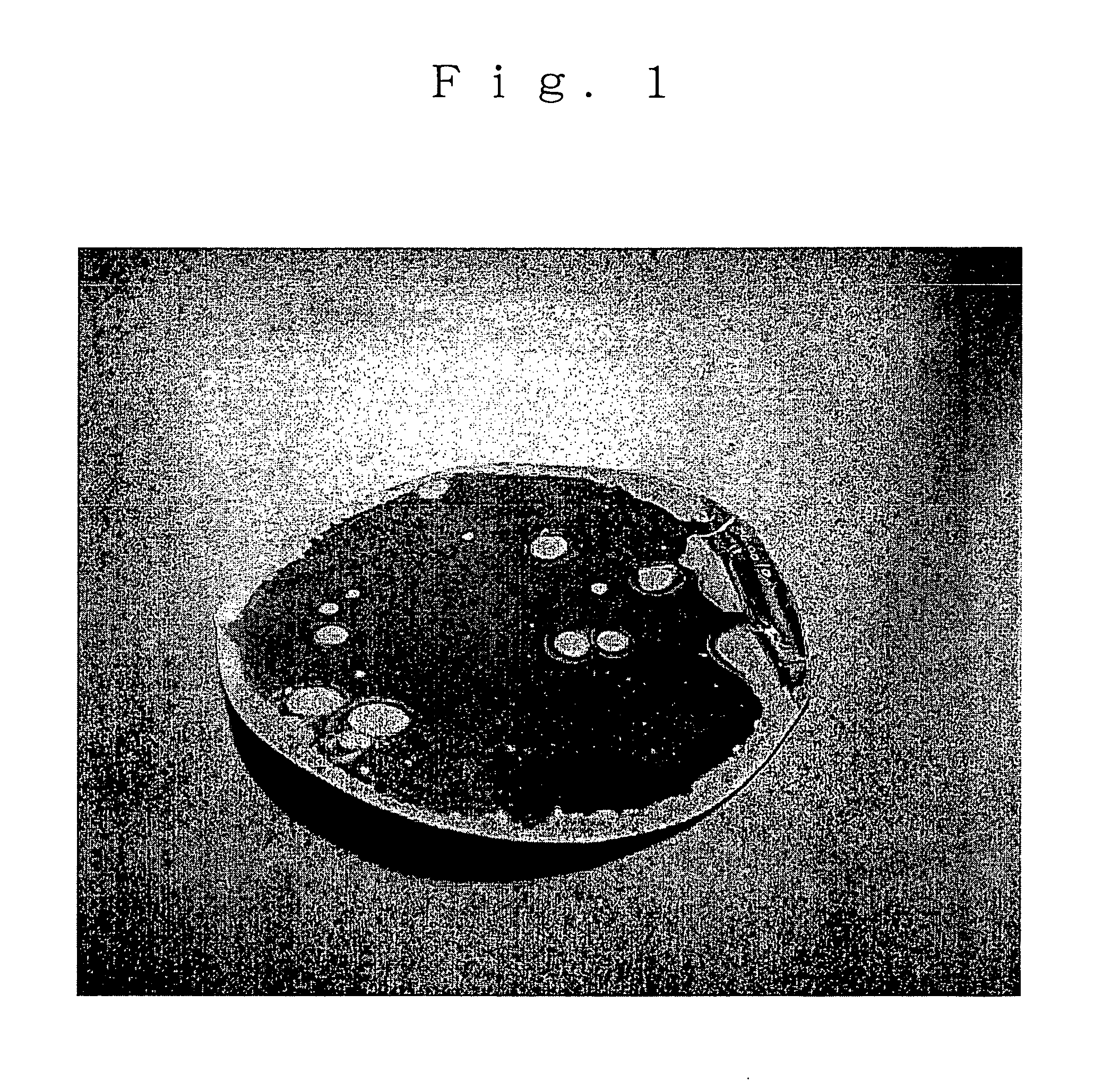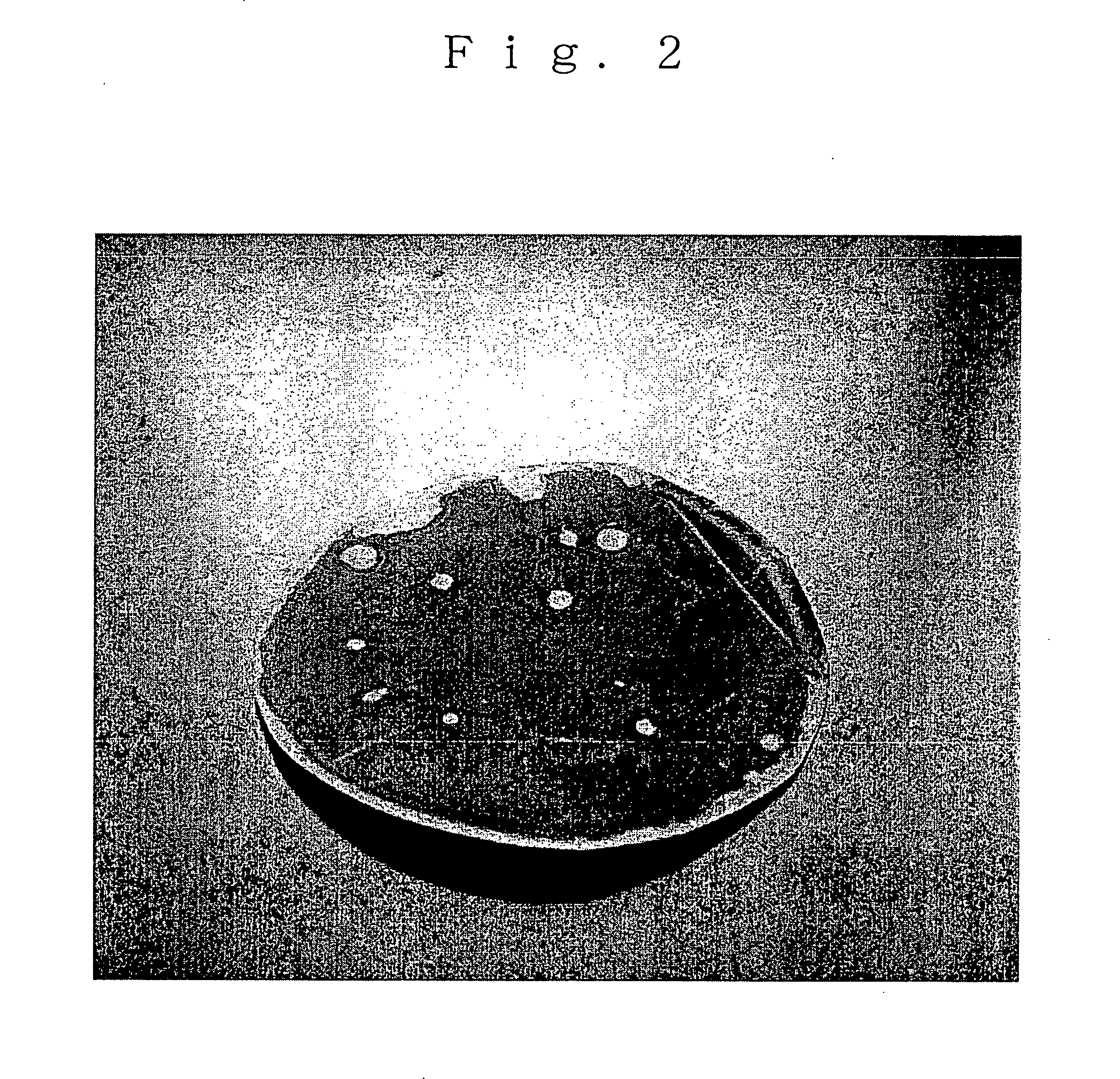Silica-containing laminated structure, and coating composition for use in forming a porous silica layer
a laminated structure and silica technology, applied in the direction of liquid/solution decomposition chemical coating, instruments, transportation and packaging, etc., can solve the problems of low productivity, cumbersome production process, and disadvantageous high reflectance of anti-reflection films
- Summary
- Abstract
- Description
- Claims
- Application Information
AI Technical Summary
Benefits of technology
Problems solved by technology
Method used
Image
Examples
example 1
[0158] A surface of the above-mentioned PET film was coated with a commercially available hard coat layer-forming agent (trade name: UVHC1101; manufactured and sold by GE Toshiba Silicones Co., Ltd., Japan) using a spin coater. Then, the resultant coating on the PET film was cured by irradiating ultraviolet rays for 120 seconds using a fluorescent lamp (trade name: GL-20; manufactured and sold by Toshiba Corporation, Japan) (illumination intensity at a wavelength of 250 nm: 4 mW / cm2), to thereby form a hard coat layer having a thickness of 5 μm. The resultant PET film having a hard coat layer formed thereon was used as a transparent substrate. The pencil hardness of this transparent substrate was 3H.
[0159] 4 g of an aqueous dispersion of moniliform silica strings which each comprise primary silica particles having an average particle diameter of about 15 nm and which have an average length of about 170 nm (trade name: Snowtex™ OUP; manufactured and sold by Nissan Chemical Industrie...
example 2
[0161] Substantially the same procedure as in Example 1 was repeated except that the aqueous dispersion of moniliform silica strings (trade name: Snowtex™ OUP; manufactured and sold by Nissan Chemical Industries, Ltd., Japan) (solid silica content: 15% by weight) was replaced by another product of aqueous dispersion of moniliform silica strings (trade name: Snowtex™ PS-SO; manufactured and sold by Nissan Chemical Industries, Ltd., Japan) (solid silica content: 15% by weight; average particle diameter of primary particles: about 15 nm; average length of moniliform silica strings: about 120 nm). Various properties of the obtained laminated structure are shown in Table 1. The laminated structure exhibited a minimum reflectance of 0.10% at a wavelength of 550 nm. The pencil hardness was 2H. The refractive index n of the porous silica layer was 1.27. The haze was 0.9%, which is good.
example 3
[0162] Substantially the same procedure as in Example 1 was repeated except that the water / ethanol dispersion of moniliform silica strings was replaced by a water / ethanol dispersion of both moniliform silica strings and separate, non-linked silica particles, wherein the dispersion used in this Example 3 was obtained by mixing together 2.8 g of an aqueous dispersion of moniliform silica strings (trade name: Snowtex™ OUP; manufactured and sold by Nissan Chemical Industries, Ltd., Japan) (solid silica content: 15% by weight), 1.8 g of an aqueous dispersion of separate, non-linked silica particles (trade name: Snowtex™ OXS; manufactured and sold by Nissan Chemical Industries, Ltd., Japan) (solid silica content: 10% by weight) and 35.4 g of ethanol. Various properties of the obtained laminated structure are shown in Table 1. The laminated structure exhibited a minimum reflectance of 0.20% at a wavelength of 550 nm. The pencil hardness was 2H. The refractive index n of the porous silica l...
PUM
| Property | Measurement | Unit |
|---|---|---|
| Length | aaaaa | aaaaa |
| Fraction | aaaaa | aaaaa |
| Percent by mass | aaaaa | aaaaa |
Abstract
Description
Claims
Application Information
 Login to View More
Login to View More - R&D
- Intellectual Property
- Life Sciences
- Materials
- Tech Scout
- Unparalleled Data Quality
- Higher Quality Content
- 60% Fewer Hallucinations
Browse by: Latest US Patents, China's latest patents, Technical Efficacy Thesaurus, Application Domain, Technology Topic, Popular Technical Reports.
© 2025 PatSnap. All rights reserved.Legal|Privacy policy|Modern Slavery Act Transparency Statement|Sitemap|About US| Contact US: help@patsnap.com



